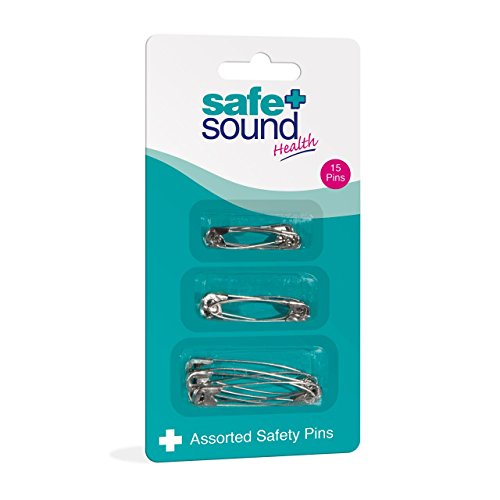Understanding the Causes of Rust on Safety Pins
Rust is a common problem that can occur on metal objects, including safety pins. The main cause of rust is the exposure to moisture and oxygen, which leads to oxidation. When the metal surface is exposed to these elements, it can develop a layer of rust, which not only looks unattractive but can also weaken the structure of the safety pin.
It is important to identify the causes of rust on safety pins before attempting to remove it. If the safety pins were exposed to moisture, such as water or sweat, they are more likely to develop rust. Additionally, storing safety pins in a humid environment or leaving them damp after use can also contribute to rust formation.
Initial Steps to Take
Before you begin the rust removal process, make sure to gather all the necessary supplies. You will need:
- A small container or bowl
- White vinegar
- Toothbrush or scrub brush
- Baking soda
- Water
- Rubbing alcohol
- A clean, dry cloth
Start by filling the container or bowl with enough white vinegar to fully submerge the safety pins. Leave the safety pins in the vinegar for around 30 minutes to an hour, allowing the vinegar to work on loosening the rust. After the soaking time is up, remove the safety pins and set them aside.
Next, use a toothbrush or scrub brush to gently scrub away any loose rust particles. This step will help to remove the surface rust, making it easier to proceed with the next steps.
Removing Rust with Baking Soda Paste
Baking soda is known for its ability to remove stains and clean surfaces, including rust. To create a baking soda paste, mix baking soda with a small amount of water until it forms a thick consistency.
Take the safety pins and apply the baking soda paste directly onto the rusted areas. Use the toothbrush or scrub brush to scrub the paste onto the rusted spots, applying gentle pressure. Continue scrubbing until you notice the rust starting to lift.
Once you have scrubbed the rusted areas, rinse the safety pins with water to remove the baking soda paste. Use a clean cloth to dry the safety pins thoroughly.
Preventing Future Rust Formation
After successfully removing the rust from the safety pins, it is essential to take steps to prevent future rust formation. Here are some tips:
- Store safety pins in a dry environment. Avoid areas that are prone to high humidity or moisture.
- Avoid leaving safety pins exposed to water or sweat for extended periods. If they do come into contact with moisture, make sure to dry them thoroughly before storing them.
- Consider using a rust inhibitor product, such as a silicone gel or spray, to protect the safety pins from rust formation.
- Regularly inspect your safety pins for any signs of rust or damage. If you notice any rust spots, address them promptly to prevent further corrosion.
Alternative Methods for Rust Removal
If the vinegar and baking soda method does not fully remove the rust from your safety pins, there are a few alternative methods you can try:
- Citric acid: Create a solution using citric acid and water, similar to the vinegar method mentioned earlier. Soak the safety pins in the solution for a few hours or overnight, then scrub away the rust.
- Lemon juice and salt: Squeeze fresh lemon juice onto the rusted areas of the safety pins, then sprinkle salt on top. Leave the mixture on for a few hours before scrubbing it off.
- Commercial rust remover: There are various commercial rust remover products available in the market. Follow the instructions provided by the manufacturer to effectively remove rust from the safety pins.
Remember to always follow safety precautions and use protective gloves and eyewear when handling chemicals or commercial rust remover products.






